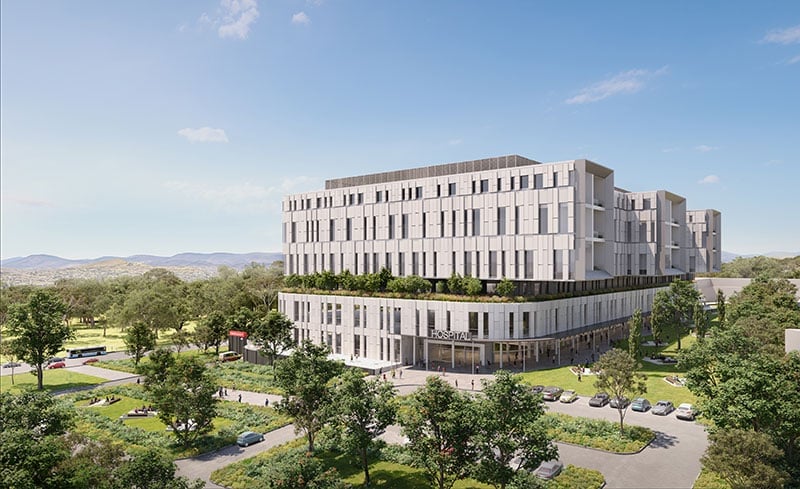
Death and taxes: both are said to be inevitable. And so, it seems, is bracket creep with both. The Benelux countries—Belgium, Netherlands and Luxembourg—legalised euthanasia and physician-assisted suicide in the early 2000s and in each place there was soon pressure to extend ‘death with dignity’ in many directions: from being strictly a last resort for a small group for whom medicine could offer no relief to being an increasingly common way of dying for thousands of people; from being for the terminally ill to those with chronic disease or suffering; from being for those with identified physical illnesses to those with psychological or ‘existential’ anguish; from being for consenting adults only to being for infants, children, the unconscious or demented; and from being for residents of each jurisdiction to those who come as ‘suicide tourists’.
Only a few other countries have so far followed suit. As the Australian states legalised euthanasia and assisted suicide—code-named ‘Voluntary Assisted Dying’ or VAD—between 2017 and 2022, there were assurances that these were the world’s most ‘conservative’ euthanasia laws with many ‘safeguards’ built in to ensure that, whatever happens elsewhere, VAD will only ever be a last resort in Australia. Advocates dismissed fears that once the state crosses the line of condoning the killing (or assisted suicide) of some citizens on ‘mercy’ or ‘autonomy’ grounds, the line would inevitably move over time. We were assured “we are not like that”: euthanasia is safe in Australian hands.
Are Aussies really so different? In 2016 Canada legalised euthanasia for the terminally ill—there the euphemism is ‘Medical Assistance in Dying’ or MAiD. Yet only three years later Alan Nichols, a 61-year-old man with a history of depression and non-life-threatening medical issues, was hospitalised over suicidal ideation; within a month he had been euthanized despite objections from his family and nurse. Mental health and disability advocates said other people without life-threatening conditions were also being killed. To ‘regularise’ this situation, MAiD was extended in 2021 to include the chronically or seriously sick, as well as those with disabilities. Meanwhile, a Parliamentary Review Committee explored extending MAiD to minors. In March of this year, eligibility was set to be expanded to include those with mental illness, but the medical community negotiated an eleventh-hour pause of “for further study”; it will now come into effect next March. Some want MAiD for newborns, war veterans, the chronically lonely…
A recent survey found one in five Canadians now thinks MAiD should be an option for anyone, irrespective of circumstances; nearly a third consider poverty and homelessness legitimate grounds; and about half deem mental illness or disability sufficient. Younger Canadians are even more enthusiastic for euthanasia-on-demand. Given the cultural, demographic and economic similarities between Canada and Australia, why would Australians think themselves immune to the bracket creep so evident there?
Sure enough, there are already calls to review Victoria’s VAD laws—which only came into operation in 2019—to allow medical practitioners to initiate conversations about VAD, to remove the requirement that a patient be seen by and offered treatment from a specialist in their illness, and to include those with dementia who cannot consent. The ‘slippery slope’ is very real.
None of this should come as a surprise. Whatever name is used to package it, euthanasia is based on the same deeply flawed premise: that lives that are unwanted or involve suffering are not worth living; only comfortable, wanted lives are inviolable; and that health carers can treat them as such. Dignity is no longer inalienable and sanctity of life no longer absolute. Rapid developments in jurisdictions that have crossed the euthanasia Rubicon are simply the logical working through of these new qualifiers on human dignity and inviolability. These laws have already enshrined a two-tier valuation of human life—those lives considered worth living and protecting, and those not. The only debate remaining is about who to include in each category.

In a culture where very particular conceptions of autonomy and compassion trump all other values, and can even justify state-sanctioned killing, the line will keep moving. So will conceptions of ‘healthcare’, ‘therapy’ and the rest. The undisputed goal of medicine and nursing used to be “Save, heal and care, never kill, harm or abandon”—which is why health professionals who assisted at public executions were often expelled from the profession. Now various objectively harmful practices are permitted, even prized. Recently the ACT government has moved to engage in a hostile takeover of Canberra’s only Catholic hospital, in significant part due to that hospital’s pro-life ethic. Some argue that abortion and VAD are so ‘essential’ that, even if every hospital offers some services and not others, no hospital should be allowed without these two.
Any community that kills (or assists the suicide of) some of its members in the name of mercy or autonomy is not relieving suffering or increasing personal freedom: quite the opposite. In euthanasia regimes suffering people suffer more and people with limited options have fewer real opportunities. Here in Australia, for instance, VAD has been facilitated in all states while high-quality palliative care is far from universally available. In other words, if you live in rural or remote Australia, or even some parts of suburbia, your only choices will be “grin and bear it” or euthanasia. No doubt that’s much cheaper for governments, but let’s stop pretending it’s all about compassion and autonomy.
To give another example: critics of Canada’s euthanasia experiment say that people with chronic but non-terminal diseases are now choosing to die because they are poor and social services are inadequate. They do not want to die, but feel that they have no choice. For all the mercy and respect talk, there’s a shortage of real care.
Recent years have seen various commissions of inquiry and recommendations to address Australia’s alarming rates of elder abuse and nursing home neglect, of suicide in all age groups, and of geriatric susceptibility to pandemic. Yet the parallel legalisation of VAD suggests a half-heartedness about protecting these groups. Maybe Australia’s are not such a safe pair of hands for the vulnerable after all…
VAD laws are BAD laws in more ways than one. When they come into effect in New South Wales in November of this year, faith-based institutions such as Catholic hospitals and aged care facilities homes will face some terrible dilemmas. The idea of nursing homes run by nuns being required to host kill-teams on their premises is so contrary to their caring ethos it should appal even non-Catholics and those open to euthanasia in certain circumstances. We must at the very least press our new state government to provide conscience protections for such institutions against this increasingly authoritarian turn in the culture.
